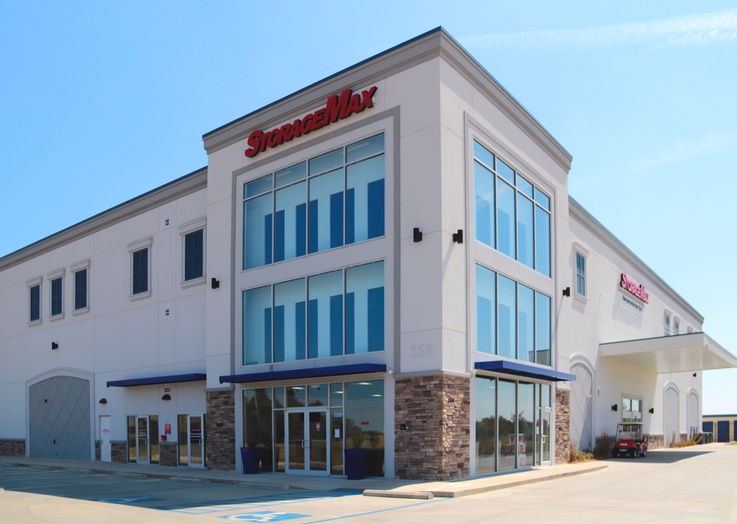Fable To Fact
Digging Into Industry Data
By Cory Sylvester
With the development cycle in its third year, the analysis required to evaluate a new or existing site is becoming more complex. Industry participants should be aware of not only new self-storage developments, but recently opened properties that are in some form of lease-up.
The analysis of a simple three- to five-mile radius alone may not be sufficient to properly assess a given location, as the performance of a store is impacted by facilities outside the traditional three- to five-mile ring, even if their customers don’t overlap. Lastly, the progress made to qualify the market has allowed us to better understand how much storage is out there, and what the actual national and regional square feet per capita numbers look like. We present the data below to highlight what the actual national and regional numbers are, differences from region to region, and why the number is very much a localized phenomenon that needs to be considered in the context of several factors.
Be Aware Of What’s In “Lease-Up”
As the industry is aware, the pace at which new self-storage facilities are being delivered has increased dramatically over the last several years. In 2016, the total number of facilities opening their doors was 364; in 2017 that number more than doubled to 835. With 2018 on pace to be just as large, if not larger than 2017, the self-storage landscape is increasingly complex and should be analyzed with more care than before. Additionally, while lease-up periods vary from location to location, it’s taking at least two to three years for these new stores to approach some form of stabilization, which means they will have lasting impacts in their local markets.
New stores in lease-up will have lasting impacts on rental rate and occupancy trends in the areas they are in, and importantly, as discussed below, impact more than just the stores that are competing for the same customers.

Is Three Miles Good Enough?
The proper size radius to analyze when developing a new property or analyzing an existing facility is a topic of frequent discussion. While the size of the competitive area is naturally different from location to location (someone in New York City is unlikely to travel five miles for a cheaper rate, while in Dallas they might travel even farther), we question whether the competitive ring that a facility pulls its customers from is as far as the analysis should go.
Developers we speak with indicate that they tend to think about their competitive area, broadly speaking, in terms of a three- or five-mile radius from the target location. More specifically, how many people live in the area? How many competitors are there? And what is the resulting square foot per capita? These are all important question to answer, but should it stop there? We don’t believe it should.
To illustrate why we raise the question, consider the Venn diagram below of “Storage Town, USA”. Storage Town has three existing facilities (red dots), and new development that’s set to open for business in the coming weeks (blue dot). A traditional analysis of the three-mile radius surrounding AAA Storage would indicate that there is no new supply coming on line, but does that mean that AAA storage won’t be impacted by new supply?

There are two distinct impacts to keep in mind when considering if AAA Storage is vulnerable to new supply:
- Competitor Overlap: The number of AAA Storage’s competitors that are competing against new supply that is outside the three-mile radius.
- Customer Overlap: The percent of AAA Storage’s trade area is shared by new supply that are outside the three-mile radius.

Competitor Overlap
As you can see in the example below, both of AAA Storage’s competitors are about to face new competition. Traditionally, when new stores open, they lower their rates below the prevailing market rate to attract new tenants. This means that both of AAA Storage’s competitors will also have to lower their rental rates to compete. As AAA Storage’s competitors lower price to compete with the new developments, AAA Storage will be forced to follow suit or they will see declines in occupancy as more customers rent units from their cheaper competitors.
Customer Overlap
Let’s assume for a moment, that AAA Storage doesn’t have any competitors, just as we have shown below. However, outside of their three-mile radius, a new development is soon to open its doors. While it’s certainly the case that AAA Storage doesn’t have any new developments in its three-mile radius, AAA Storage does share a segment of customers with a new development facility that is outside AAA’s three-mile radius. If the new development lowers its rates, AAA Storage will be forced to follow suit or lose customers to the new development.

In both examples above, we can see that AAA Storage has to consider new development activity outside of their trade area even though there are no new facilities in their trade area. As this applies to the real world, we can see that there are direct and indirect impacts from new supply. The number of facilities in lease-up continues to rise, and it’s increasingly important for the industry to take this into account as they do their due diligence.
Seven Square Feet Per Capita
Once you have calculated the supply in an area and compared it to the number of people living there, you derive the square feet per capita. The number we hear most often is that the U.S. has seven square feet per capita. What we’ve found is that the self-storage industry has unanimously anointed seven as the accepted number for self-storage supply per capita. Some may differ slightly from seven, but something close is universally accepted as the correct amount of storage supply for a given market. Anything over seven is generally considered over-supplied, and anything less is considered under-supplied. For most, it has become the metric for analyzing an acquisition, disposition, or development. Where this “magic number” originally came from is uncertain, but it has just spread as a type of self-storage folklore.

When we entered the self-storage industry in 2016, the most reputable source of information on square feet per capita came from the Self-Storage Almanac, which is where we can find evidence of seven. They have been the undisputed industry leader in education and market intelligence for decades and have certainly had some influence. The metric has fluctuated over the years as their methodology has evolved, but it has typically been in and around the seven range.
5.5 Is The Actual Number
With the understanding that a dataset of every single self-storage facility did not yet exist, we set out a year ago to create the industry’s first, bottoms-up database of the self-storage installed base. Our process was painstakingly thorough as we found every facility, confirmed the address, and mapped their individual square footage. With accurate square footages of every facility, we now understand that the nationwide number is 5.5 square foot per capita.

As you can see below, the Self-Storage Almanac did produce a rather accurate estimate for both the number of facilities and average facility size in the top 50 markets. As we move beyond the top 50 regions, however, we found that the actual average facility size decreases significantly. The Self-Storage Almanac used the same estimate for facility size in the non-top 50 markets as they did for the top 50 markets, which produces a total square footage number for the entire country that overestimates the total square feet.
Using the actual numbers, we now know that the actual square foot per capita for the Top 50 markets is 5.1, for the rest of the country it is 6.0, and the average for the entire United States is currently 5.5, not seven.
Regions Differ Significantly
The logical conclusion would be, “OK, let’s just change the number from seven to 5.5”, but there is more to the story. The analysis is a little more nuanced. If we look at the top 50 markets and rank them by square foot per capita, we see they range from as small as 2.52 all the way up to 12.44, with almost everything in between.


The two major takeaways are 1) the actual nationwide number is 5.5, not seven; and 2) seven was never the number in the top 50 markets.

Basements May Hold The Answer
Basements shed some light on many of the large regional discrepancies. To our surprise, there are significant differences across the country in the percent of homes with basements. They are a clear alternative to self-storage and, as we can see in the chart to the right, regions with a higher percent of basements have less square footage per capita. While the correlation isn’t perfect, the chart does appear to lend incremental insight to the discussion.

The data would suggest that there is not a standard metric; therefore, we should not be so quick to generalize. The metric for markets in Texas could well be 11, while markets to the North could be four. There are many factors that go into analyzing a region, and we shouldn’t rely solely on square footage per capita.
Summary
There has been a dramatic evolution in the quantity and quality of data in the self-storage industry over the last few years. This data comes at a crucial time, as the analysis need before buying or building a self-storage facility is becoming increasingly complex. Whether its monitoring facilities under lease-up, considering activity outside of your immediate three- to five-mile area, or understanding the drivers behind square footage per capita, if considered and applied appropriately, the industry will be better off if adopted broadly.
Cory Sylvester is a principal at Union Realtime. Union Realtime provides both data and research to the investment industry as well as advanced location intelligence solutions for all members of self-storage industry including, owners, developers, lenders, managers, investors, and brokers. Prior to Union Realtime, Cory was a research analyst responsible for investing in technology and media companies at Columbus Circle Investors and J.P. Morgan Asset Management. He has a B.A. in Economics from Skidmore College.
More Content
Popular Posts
Recent Posts
When Germantown High School in Gluckstadt,...
It’s comforting to know that no matter how...
A very wise self-storage expert once said...
Senate Bill 709 (SB709) has many in the...
In January, self-storage industry veteran...
In April 1984, the first non-stop commercial...
Raise your hand if you’ve ever made plans,...
Everyone knows it: Investing in real estate...









